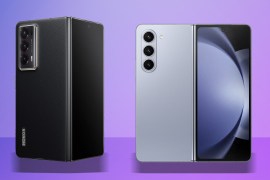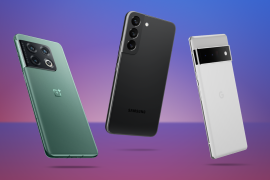LG OLED Signature W vs Samsung QLED Q9: the weigh-in
Prepare your peepers: it’s time for OLED and QLED to face off
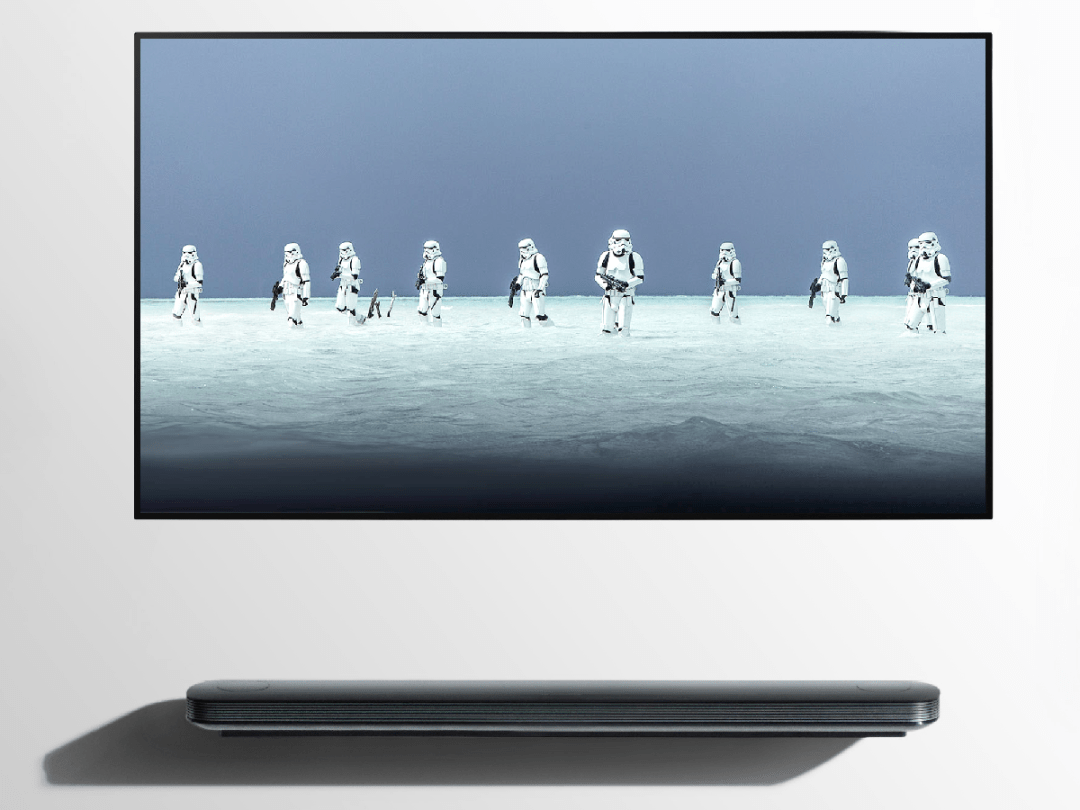
Time was, choosing a telly meant sizing up your cabinet and heading down the local electronics store, where a man in a suit would up-sell you a rear projection box and be done with it.
No more. Like a foreign language thesaurus for the uninitiated, there’s a seemingly endless stream of acronyms attached to modern sets. Think: 4K, HDR, OLED, SUHD.
Now, there’s a new addition to the combination of confusing capital letters. Say hello to QLED, Samsung’s take on next-gen telly tech – and, possibly, the start of a whole new gadget war.
What’s the difference? Which will win? Until we’ve stuck LG’s top-end OLED Signature W on the wall beside Samsung’s stunning QLED Q9, we can’t be sure.
What we can do, though, is cobble together an early conclusion based on what we know, what we’ve seen and what we’ve been told to expect from these two TV titans.
LG OLED Signature W vs Samsung QLED Q9: Design

Before we get into the pixel detail behind these behemoths of home entertainment, it’s worth taking a moment to consider how pretty their shells are.
After all, these are devices to be stuck to your wall for all to see – and the last thing you want is some un-pretty panel ruining your living room aesthetic.
At first sight, the Q9 is quite the looker, with its barely-there bezels – not to mention the all-metal body. At 10mm deep, it’s not the slimmest screen around – probably because QLED requires a backlight, which needs a secondary panel – but it’s still darn thin and, being fully flat, it should be a cinch to mount.
Sadly for Samsung, though, there’s little that can top the Signature W when it comes to breathtaking design. Why? That ‘W’ stands for wallpaper, and while it’s not literally paper-thin, the LG is breathtaking.
Despite measuring 77in on the diagonal, it’s just 2.57mm thick. It’s so skinny thaty it can’t use a traditional screw mount. Rather, it employs magnets to the same effect. If flagship screens should make us marvel, the Signature W has to take the win.
Winner: LG OLED Signature W
Mind-blowing › The best TVs of CES 2017
LG OLED Signature W vs Samsung QLED Q9: Picture resolution
Appearances aside, it’s on to picture – or, rather, its resolution and sharpness.
The problem here, of course, is that both boxes offer UltraHD 4K. That’s 3840×2160 pixels on the LG and probably something similar on the Q9 – unless Samsung claims to have a higher count, courtesy of the nano-particles that its QLED tech employs.
With the battle between OLED and QLED being much more about colour quality and contrast than the actual sharpness of picture, there’s little to slip between the two here, at least on paper.
Winner: Draw
What to watch › The best 4K movies and TV shows
LG OLED Signature W vs Samsung QLED Q9: Colour quality and saturation
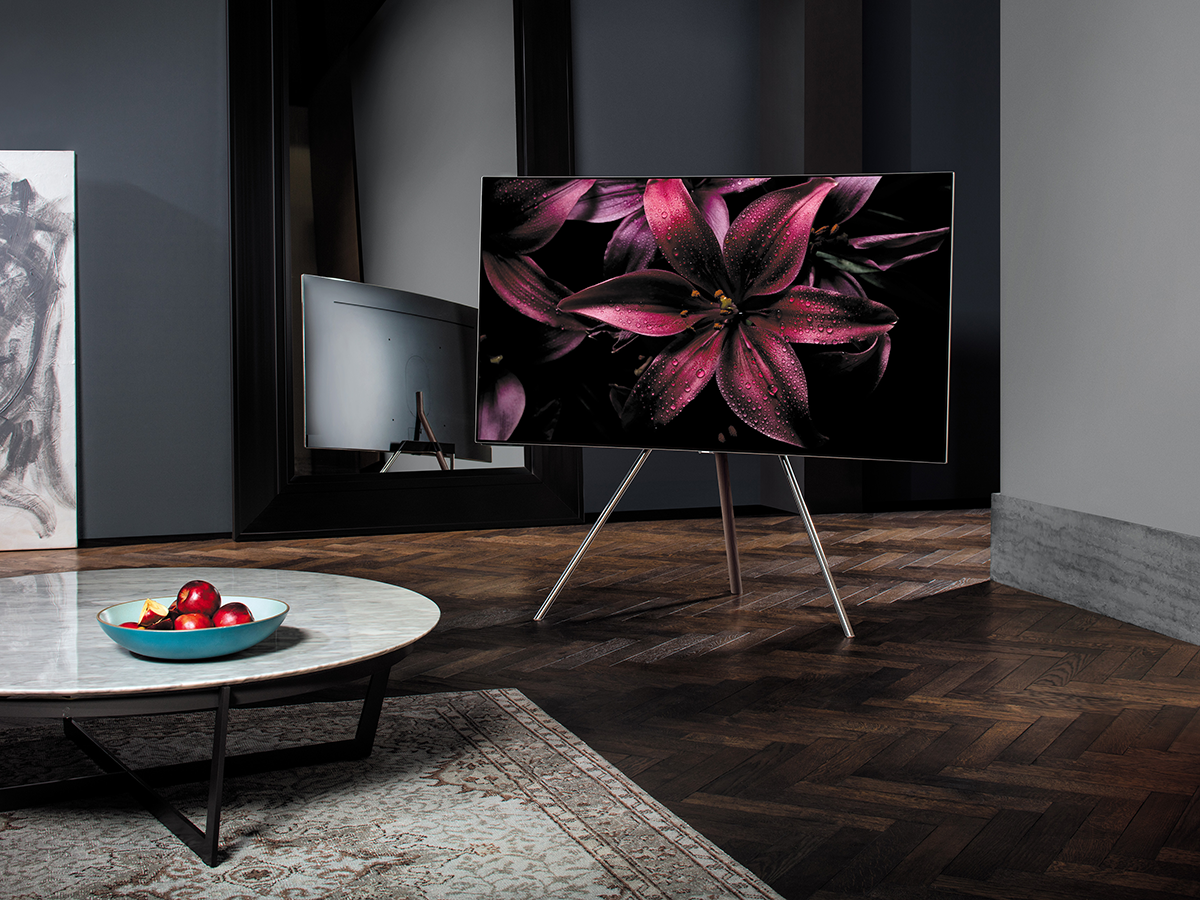
Even before CES, we were hearing that colour is the new benchmark of quality. Both LG and Samsung are capable of building much bigger tellies, but the real consumer want is properly prettier pictures.
Here’s where that QLED tech comes in. It stands for Quantum Dot LED and it basically means that the Q9’s display is packed full of additional tiny particles – between 2 and 10 nanometres in diameter – that are incredibly good at producing saturated blues and reds.
Samsung is claiming that the Q9 achieves 100% reproduction of the DCI-P3 colour range (the spectrum used by the American film industry), which essentially means that any colour can be expressed at any brightness. In short: astounding saturation.
Of course, LG’s OLED tech is famed for its ability to produce vivid, vibrant colours – and the Signature W ought to be no exception.
Still, at this early stage, the Samsung edges it – though only a full review will determine whether it was more marketing hype than substantial evolution.
Winner: Samsung QLED Q9
LG OLED Signature W vs Samsung QLED Q9: Contrast and depth
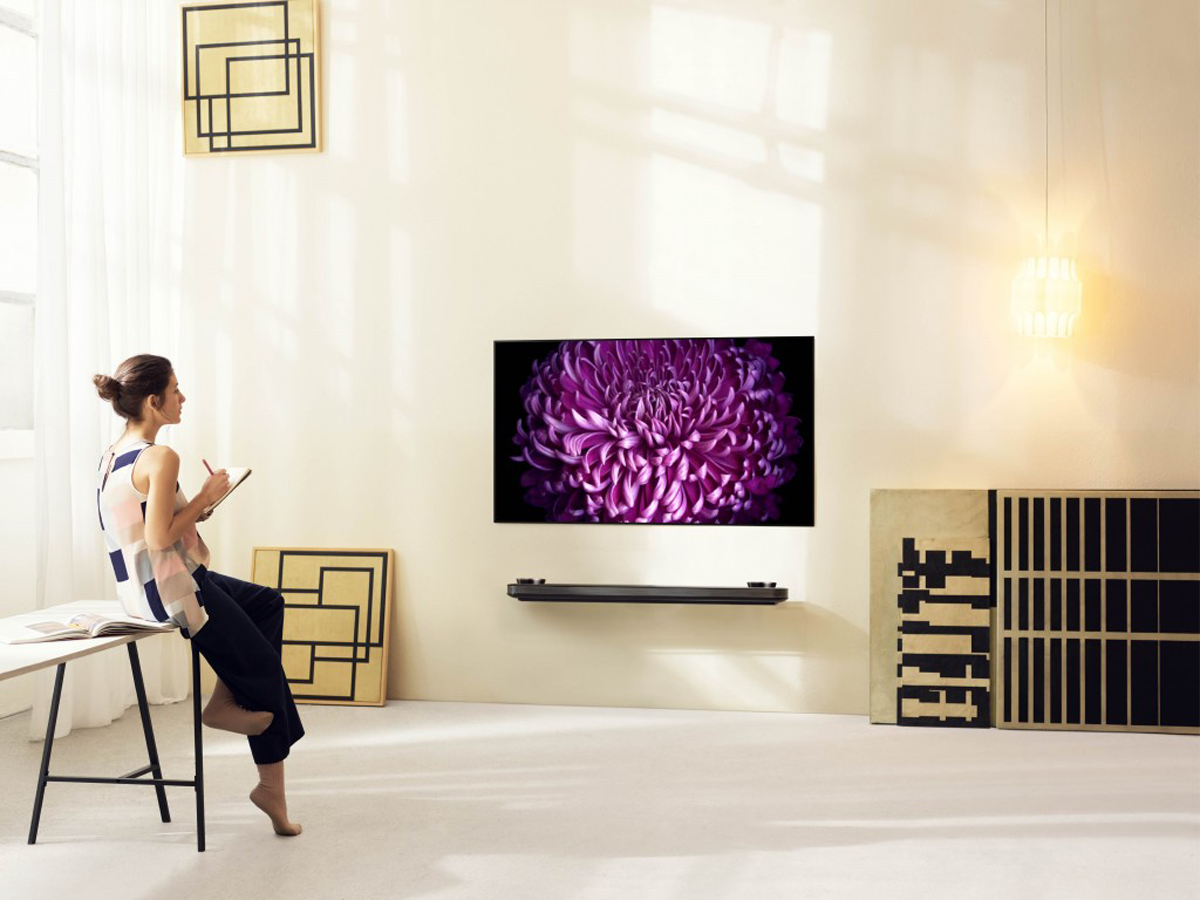
Again, until we put the two sets side-by-side there’s no concrete way of telling between the OLED and QLED tech.
That said, it’s hard to imagine any backlit panel – however small the nano-particles in the Q9 are – beating the inherent contrast of an OLED display, particularly that on the Signature W.
Because OLED pixels emit their own light, rather than receiving it from a separate panel, and can be independently switched off for true-life blacks – with no bleed – it’s almost impossible to beat the depth of blacks on an OLED.
Both sets are HDR-equipped, which should deliver solid contrast levels – however, only the LG OLED Signature W plays nice with Dolby Vision: Samsung made no reference to the emerging HDR standard (and chief rival to HDR 10) when unveiling the Q9.
Why does that matter? Well, Dolby Vision delivers both brighter outputs and wider colour gamuts than HDR10, which also means it’s likely to ensure greater contrast ratios.
Sure, smart tech and an anti-reflective coating mean the Q9 can kick out between 1500 and 2000-nit peak brightness (double that of OLED), while first inspections suggest it’ll offer up impressively dark blacks, we still can’t see it beating the natural contrast of the OLED Signature W.
Winner: LG OLED Signature W
Clued-up › What is HDR and why should you care?
LG OLED Signature W vs Samsung QLED Q9: Sound

As any home cinema buff will tell you, stumping up for a 4K telly without upgrading your surround sound setup is like buying a sports car only to stick cheap rubber on the wheels.
But then there’s the neatness factor, and it would be very understandable if a person who bought one of these gorgeous new TVs would prefer to not lessen the impact with speakers spread all over the lounge. In which case, the TV’s own audio will definitely be a consideration.
And here LG is going pretty big, partnering the aforementioned Dolby Vision picture tech with fancy pants Dolby Atmos sound, and that could make the Signature W a stellar-sounding set as standard. Why? Well, Dolby Atmos is all about creating an extra layer of sound above the watcher and, while it’s very unlikely that a one-box Atmos solution will ever reach the heights of a full home cinema setup, the Signature’s 60W soundbar hub – which also handles inputs – should be a significant step-up from the majority of television speakers.
As for the Q9, there’s little firm information out there regarding the on-board audio – but, based on early interactions with the telly, it’s safe to assume that the speakers will be built into the bezel. Which means they’re likely to suffer from the same issues as every other slim set – small speakers that make a fairly weedy sound.
Admittedly, until we’ve tested both side-by-side we can’t say for sure – but, at this stage, it seems hard to imagine the LG’s outboard soundbar not sounding significantly better than the bezel-bound speakers of the Samsung.
Winner: LG OLED Signature W
LG OLED Signature W vs Samsung QLED Q9: Software
As with smartphones, software can be a seriously divisive topic when it comes to top-end telly boxes. Still, there are some benchmarks by which to judge a box’s OS.
Samsung reckons the Q9 will be its smartest screen to date. It’ll carry the Smart TV interface, which now plays nice with smartphones – meaning you’ll be able to browse and select programs from your palm, even without the Samsung Smart Remote.
As for LG, the company’s webOS platform remains sharp and speedy, and the Signature W will benefit from the latest update to webOS 3.5. The new version adds support for VR computers and mobile devices, as well as streamlining zoom on the Magic Remote.
Both will have the boons and bad points and, without a thorough test, there’s little to choose between them.
Winner: Draw
LG OLED Signature W vs Samsung QLED Q9: The early verdict
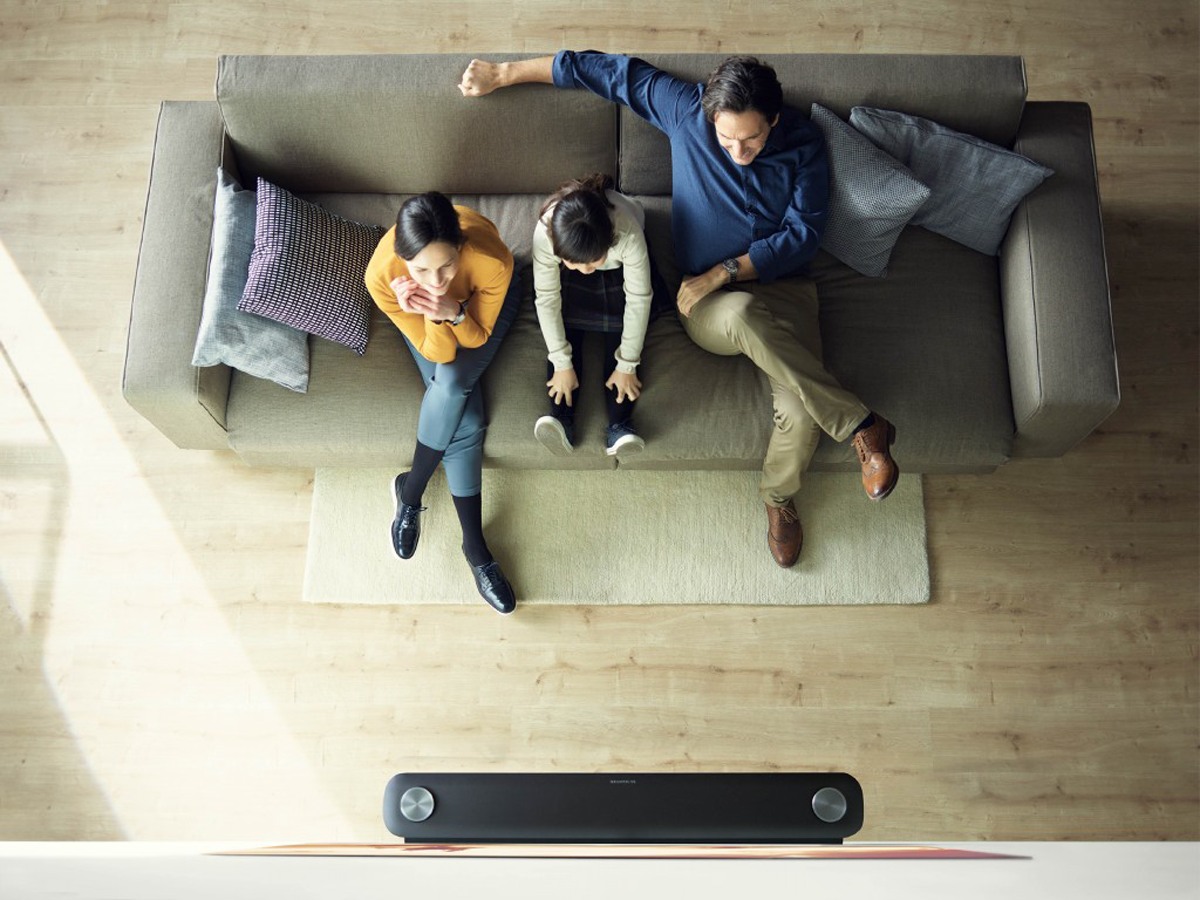
Picking an overall winner before trying both tellies in test conditions is impossible, particularly as Samsung is currently being very coy about many of its QLED telly’s specs.
Is that a sign of fear? It certainly doesn’t seem so, given the claims Samsung has made around QLED. Even the name sets it squarely against LG’s previously supreme OLED screens – which is certainly running the gauntlet.
On a basic level, both sets should be very good indeed. As you’d expect from any telly in 2017, let alone a flagship from one of the two biggest manufacturers in the world, both will pack a serious array of inputs and ports, and both should be relatively future-proof – for a good few years, at least.
All the same, based on what we know so far, it still seems that the Signature W is the superior device. Even if resolution is a given, and even if Samsung’s Q9 delivers the better viewing angles it’s promised, in terms of picture quality, colour and contrast, it’s hard to see OLED being defeated. Add that next-gen audio and a stunning design and you’ve got a recipe for televisual brilliance.
As ever, though, the proof will be in the pudding (and the pricing, which hasn’t yet been revealed for either model), so we’ll save the final verdict on these two TV titans until we’ve got both in for full reviews.
Jargon buster › What is QLED? And is it as good as OLED?

